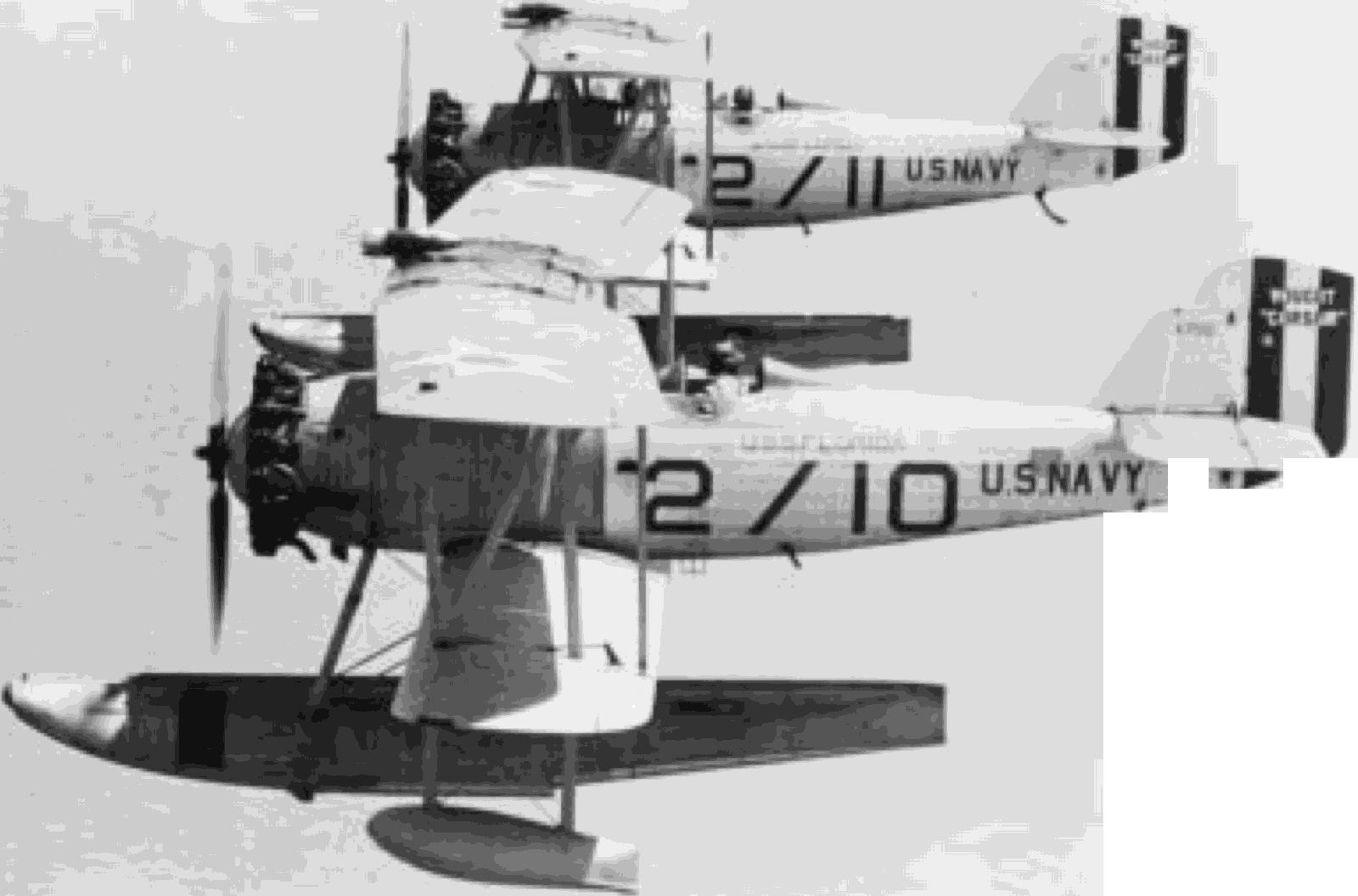
66
UNITED STATES NAVAL AVIATION
1910-1995
1926-Contin ued
an altitude of 400 feet, dropped 25 pound fragmentation
bombs; observation squadrons similarly attacked from
1,000 feet. Pilots of VF-2, commanded by Lieutenant
Commander Frank D. Wagner and flying F6Cs and FB-
5s, scored 19 hits with 45 bombs on a target 100 feet by
45 feet. The uses visualized for this tactic included dis-
abling or demolishing flight decks, destroying enemy
aircraft in flight, attacking exposed personnel on ship or
shore and attacking light surface craft and submarines.
1927
1 January
A flight test section was established as a
separate department at NAS Anacostia, D.C., with
Lieutenant George R. Henderson in charge.
1 January
To test the feasibility of using enlisted
pilots in fleet squadrons, VF Squadron 2, manned with
four Naval Aviators and 10 Aviation Pilots, was estab-
lished at San Diego, Calif., Lieutenant Commander
James M. Shoemaker commanding.
18 January
Lieutenant Commander John R. Poppen,
MC, reported for duty in charge of the Aviation Section
of the Naval Medical School, Washington, D.C., mark-
ing the beginning of a three month period during
which the entire resources of the school were devoted
to intensive instruction in aviation medicine. The insti-
tution of this program also marked the beginning of
Flight Surgeon training in the Navy and the discontinu-
ance of an interservice agreement in effect since 1922,
by which Navy Medical Officers were trained in this
specialty at the Army School for Flight Surgeons.
9 March
The first passenger transport, the JR-l tri-
motor, was purchased from the Ford Motor Company
following a demonstration at NAS Anacostia, D.C.
14 April
Lieutenant George R. Henderson, flying a
Vought 02U Corsair equipped with a Pratt & Whitney
Wasp engine, broke the world altitude record for Class
C seaplanes with a useful load of 500 kilograms,
reaching 22,178 feet over Washington, D.C.
23 April
Lieutenant Steven W. Callaway, flying a
Vought 02U Corsair at Hampton Roads, Va., set a new
100-kilometer world speed record for Class C seaplanes
with a 500 kilogram useful load, at 147.263 mph.
30 April
Lieutenant James D. Barner, flying a Vought
02U Corsair at Hampton Roads, Va., broke the 500-
kilometer world speed record for Class C seaplanes
carrying a useful load of 500 kilograms with a speed
of 136.023 mph.
5 May
Lieutenant Carleton C. Champion took off
from Hampton Roads, Va., in a Wright Apache,
equipped with a Pratt & Whitney Wasp engine and
NACA supercharger, and climbed to an altitude of
33,455 feet, breaking the existing world record for
Class C seaplanes by better than 3,000 feet.
Battleship-based
02Us (Vought
Corsairs)
of
1 920s 426930
 |
20 |
 |